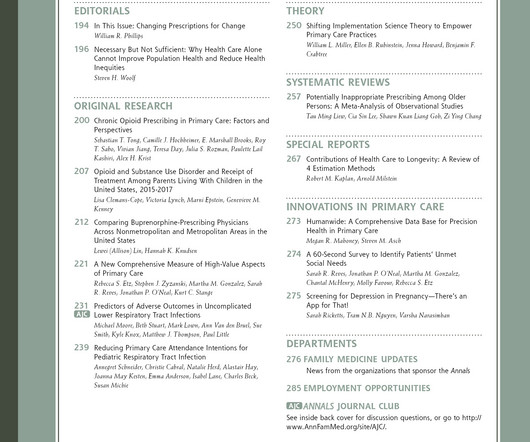Validation of an Administrative Knee Osteoarthritis Severity Index in a Veterans Health Affairs Cohort [Big data]
Annals of Family Medicine
NOVEMBER 20, 2024
The Osteoarthritis Severity Index (OASI) was developed to inform clinical trajectory of knee OA toward TKA and was previously created and validated in a nationally distributed, general population cohort of EHR data. The first OA diagnosis in record must occur from 2009-2014 and index date is OA diagnosis date.














Let's personalize your content